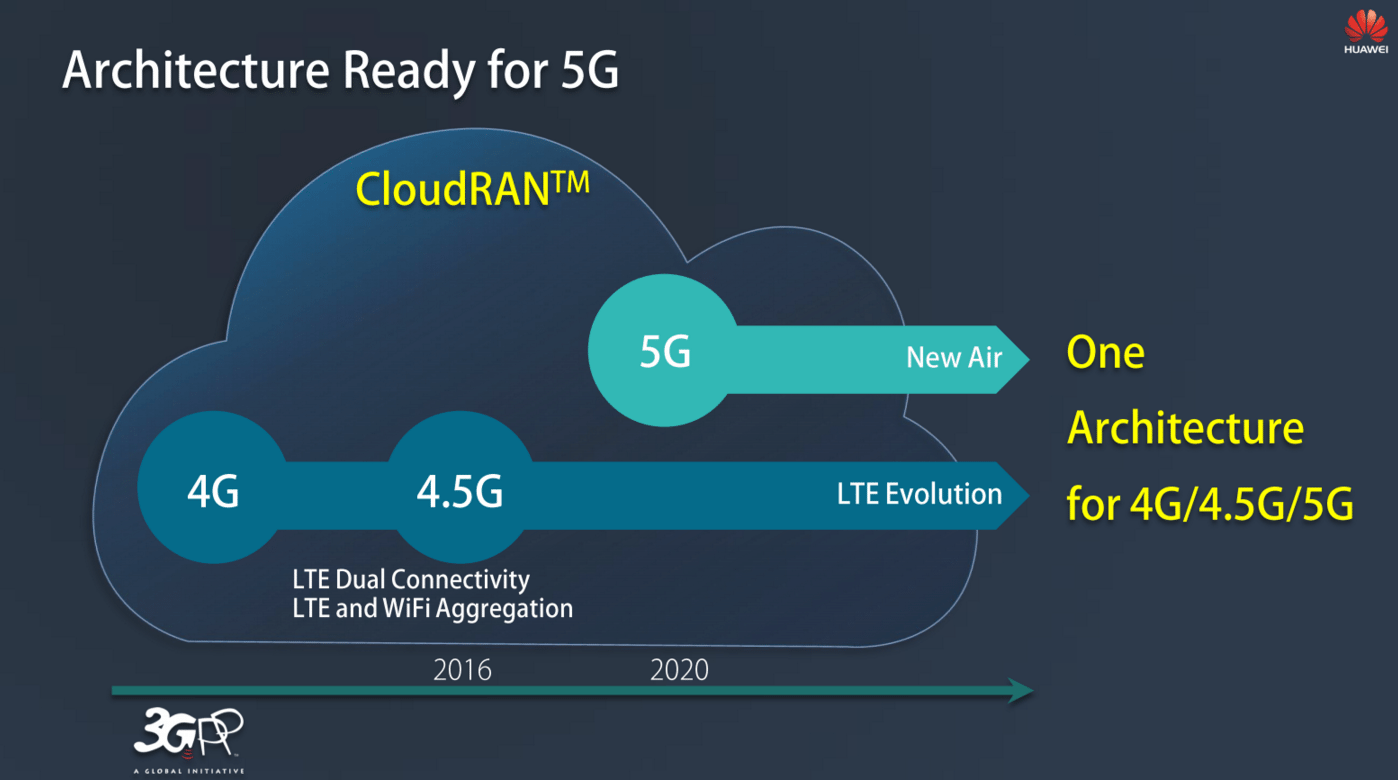Flexibility of cloud gets carriers 5G ready, eases enterprise digitalization
The complexity of ultimate 5G networks, often described as a network of network, will acquire a new approach on the radio access side, according to Huawei officials presenting during the firm’s annual Huawei Global Analyst Summit, April 11-13, in Shenzhen, China.
Cloud-based networks will allow a user to seamlessly move between different radio access technologies–Wi-Fi, DAS, small cell, macro layer LTE or 5G, etc…–deployed through a common architecture supporting multiple bands and layers.
This allows for dynamic capacity planning and allocation based on real-time user metrics.
From a 5G-focused Huawei white paper: “Radio access infrastructures based on cloud architecture technologies will provide on-demand resource processing, storage and network capacity wherever needed. Software-defined air interface technologies will be seamlessly integrated into 5G wireless access network architectures. The evolution of RAN sites will develop toward a ‘hyper transceiver’ approach to mobile access, and will help realize the joint-layer optimization of how radio resources are efficiently utilized. Core network evolution will revolve around how to enable more flexibility for the creation of new services and new applications…[and] will become the foundation of core networks, and will open the network to allow the leveraging of innovations as they are developed. 5G core networks will also be equipped to seamlessly integrate with current 3G and 4G core networks.”
And while 5G is still a few years away from standardization, let alone widespread commercialization, many carriers are more focused on the next incremental development in LTE, which is LTE-Advanced Pro, branded by Huawei and others as 4.5G. Company reps position CloudRAN as facilitating a movement from 4G to 4.5G while also setting the stage for interoperability with future 5G networks.

That’s what cloud does for service providers. Now, let’s look at the enterprise space, which is currently marked by the desperate need to digitalize and modernize legacy IT infrastructure.
Joy Huang, Huawei vice president of IT Product Line, discussed the ICT vendor’s FusionCloud platform, which is based on OpenStack architecture and provides a hybrid, turnkey cloud solution.
“In the cloud era,” officials said in a statement, “as enterprises migrate core applications…the hybrid cloud will become the mainstream deployment form for enterprises. Huawei cooperates with carriers such as Deutsche Telekom to provide unique public cloud and hybrid cloud solutions. Deutsche Telekom and Huawei launched secure, simple, and affordable Open Telekom Cloud to provide European enterprises of all sizes with on-demand, pay-as-you-go, secure cloud services.”
Huawei counts around 2,500 enterprise cloud-computing customers.

